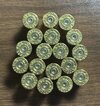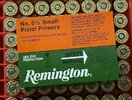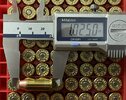fxvr5
Member
- Joined
- May 26, 2017
- Messages
- 3,305
What's the case capacity of the 38 SC brass vs 9mm?
That information was noted in the first post. The OP writes: "Trying new loads for 38 Short Colt ammo. The 38 SC brass is slightly more voluminous than 9mm brass with a slightly larger case diameter and case length ... but close nonetheless."
That information is also in the article that has been linked to: "Case volume is an important factor in determining chamber pressure. Measurements of case capacity showed that Starline’s .38 Short Colt brass have a little more capacity than the typical 9 mm brass. I trimmed virgin cases to the same length of 0.748 inch and measured (three times) how much Accurate #7 powder they would hold. Starline’s .38 Short Colt case held an average of 14.62 grains. Starline’s 9 mm case held 14.28 grains. For comparison, a Lapua 9 mm case held 13.97 grains, and a Winchester nickel-plated 9 mm case held 14.32 grains. When loaded with the same powder and bullet to the same overall length, the .38 Short Colt case should produce slightly less chamber pressure than a 9 mm case. This is handy to know when using 9 mm load data for Starline .38 Short Colt cases."
The link again:

An NRA Shooting Sports Journal | Handloading The .38 Short Colt For Competition
Modern competitive revolver shooters use .38 Short Colt for its short case, which is faster to eject and reload than the more common .38 Special.
Last edited:





